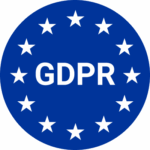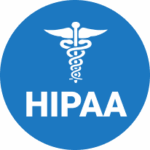
Key Takeaways
Business process mapping is a critical first step for identifying automation opportunities.
- What are the examples: This article provides examples, such as mapping an accounts payable process (invoice receipt, matching, approval, payment) or an employee onboarding process (tasks for HR, IT, and hiring manager).
- The business impact: By creating these visual maps, businesses can clearly see which parts of the process are manual, repetitive, and rule-based.
- The key outcome: The map serves as the essential blueprint for designing an effective automated workflow.
Business Mapping in the Enterprise
Understanding precisely how work flows is paramount for achieving efficiency and competitive advantage today. This is where business mapping examples offer invaluable insights. What is mapping in business? It is the strategic visualization and documentation of an organization’s internal processes, illustrating each step, decision point, and interaction from beginning to end. This meticulous approach unveils operational complexities, pinpoints bottlenecks, and crucially reveals untapped automation opportunities.
This article guides discerning businesses through the practical application of process mapping, leveraging real-world Business Mapping Examples. We will clarify how organizations can precisely identify, strategically design, and optimally refine their internal processes. Our discussion will highlight effective methodologies for uncovering significant automation opportunities, ensuring every optimization effort yields maximum return on investment for corporate leaders, empowering them with actionable business mapping use cases.
What Constitutes Mapping in Business?
At its core, mapping in business is the visual blueprint of an organizational workflow. Imagine a complex set of activities, decisions, and handoffs—from a customer order being placed to its final delivery. Mapping transforms this intricate sequence into a clear, understandable diagram. This visual clarity enables all stakeholders to grasp the nuances of how work truly gets done, identifying precise points where efficiency can be enhanced or where automation can be introduced.
This process involves detailing who does what, when it happens, and what systems are involved. It moves beyond abstract descriptions to concrete visual representations, making it a powerful tool for analysis and improvement. Whether for streamlining a financial reconciliation or optimizing a customer service interaction, effective Business Mapping Examples are built upon this fundamental understanding.
Core Principles of Business Mapping
Creating impactful process maps relies on a structured approach that emphasizes clarity, accuracy, and actionability. Adhering to a sound business process mapping methodology is key to success. This ensures the maps serve as true guides for improvement and automation, moving beyond simple documentation to actionable insights.
Key principles within this methodology include:
- Define Clear Boundaries: Always establish the precise start and end points of the process being mapped.
- Identify Key Stakeholders: Engage all individuals and teams involved to gather comprehensive insights into each step.
- Detail Each Task: Document every action, decision, and handover in granular detail, including system interactions.
- Visualize the Flow: Use standard symbols and swimlanes (if applicable) to clearly represent the sequence and ownership of steps.
- Validate and Iterate: Review the map with process participants to ensure it accurately reflects real-world operations and is refined based on feedback.
- Focus on the “As-Is” First: Understand the current state thoroughly before attempting to design an optimized “to-be” process.
- Highlight Pain Points: Actively mark bottlenecks, redundancies, and manual steps that are prime automation opportunities.
By following this business process mapping methodology, organizations can create maps that are not just informative but truly instrumental in driving operational improvement and identifying compelling business mapping use cases.
Business Mapping Examples in Manufacturing
In the manufacturing sector, efficiency and precision are paramount, making Business Mapping Examples critical for optimizing production and operational flows. Business mapping for manufacturing processes uncovers inefficiencies from raw material acquisition to finished product delivery, revealing significant automation opportunities.
Consider these common scenarios:
- Production Line Optimization: Mapping the assembly line process can identify bottlenecks in equipment utilization, material flow, or human-machine interactions, leading to reconfigured layouts for faster throughput.
- Quality Control Workflow: Business mapping for manufacturing quality checks reveals manual inspection points, data logging procedures, and deviation handling. This can highlight areas where automated vision systems or AI-powered analytics can enhance accuracy and speed.
- New Product Introduction (NPI): Mapping the NPI process from design to full-scale production can expose delays in cross-functional approvals, documentation handoffs, or supplier onboarding, paving the way for streamlined digital workflows.
These examples illustrate how strategic mapping drives leaner, more agile manufacturing operations.
Business Mapping Examples in Supply Chain Management
Effective process mapping for supply chain management is essential for navigating the complex web of logistics, inventory, and distribution. By visually dissecting these intricate flows, organizations can uncover vital automation opportunities that enhance resilience, reduce costs, and improve delivery speeds.
Consider these business mapping use cases:
- Order Fulfillment Process: Mapping the journey from customer order placement to delivery often reveals manual checks, disparate inventory systems, and fragmented communication between warehouses and shipping. This highlights where integrated automation can accelerate order processing and reduce errors.
- Inventory Management: Process mapping for supply chain management of inventory can expose inconsistencies in stock tracking, manual reorder points, or inefficient storage layouts. This points to automation opportunities for automated inventory updates, demand forecasting with AI, and optimized warehouse operations.
- Supplier Onboarding and Management: Mapping the supplier lifecycle, from initial vetting to ongoing performance monitoring, can identify lengthy approval processes and manual data exchanges. This can lead to implementing business process mapping tools that automate supplier data collection and compliance checks.
These Business Mapping Examples demonstrate how a clear understanding of the supply chain drives strategic operational advantages.
Business Mapping Examples in Banking & Finance
The banking and finance sector, characterized by high transaction volumes, stringent regulations, and sensitive data, greatly benefits from Business Process Mapping. Process mapping for banking & finance reveals inefficiencies in critical operations, leading to significant automation opportunities for compliance, speed, and accuracy.
Consider these impactful business mapping use cases:
- Loan Application Processing: Mapping the entire loan application journey, from submission to disbursement, often uncovers multiple manual data entries, fragmented credit checks, and lengthy approval queues. This points to automation opportunities for digital forms, AI-driven credit assessment, and automated routing.
- Accounts Payable/Receivable: Process mapping for banking & finance accounts operations can expose manual invoice reconciliation, inconsistent approval flows, or delays in payment processing. These are prime areas where integrated business process mapping tools can facilitate automated data extraction, matching, and payment initiation.
- Regulatory Compliance Reporting: Mapping complex compliance workflows for AML (Anti-Money Laundering) or KYC (Know Your Customer) often reveals extensive manual data collection and reporting. This highlights automation opportunities for AI-driven data aggregation and automated report generation, ensuring accuracy and timeliness.
These Business Mapping Examples are crucial for enhancing operational integrity and regulatory adherence in financial institutions.
Business Mapping Examples in IT Operations
In IT, efficient operations are paramount for service delivery and infrastructure stability. Process mapping for IT reveals the intricate workflows behind incident resolution, service requests, and system changes, exposing vital automation opportunities to improve efficiency and reliability.
Consider these business mapping use cases:
- Incident Management: Mapping the incident resolution process from ticket creation to closure can reveal bottlenecks in diagnosis, escalation, or communication. This highlights automation opportunities for automated ticket routing, knowledge base suggestions, and automated status updates.
- User Provisioning/Deprovisioning: Process mapping for IT user lifecycle management often shows manual approvals, disparate system updates, and security checks. This points to automation opportunities for automated user account creation, access rights assignment, and system deactivation upon departure.
- Change Management: Mapping the change management process for IT systems can reveal extensive manual approvals, documentation requirements, and coordination efforts. This identifies automation opportunities for automated change requests, impact assessments, and scheduled deployments, enhancing system stability.
These Business Mapping Examples enable IT teams to deliver faster, more reliable services and manage complex infrastructures with greater agility.
Business Mapping Examples in Healthcare
The healthcare sector, with its complex patient journeys, regulatory demands, and administrative burdens, significantly benefits from Business Process Mapping. Process mapping for healthcare uncovers inefficiencies in patient care pathways and administrative workflows, revealing crucial automation opportunities to improve patient experience and operational efficiency.
Consider these business mapping use cases:
- Patient Intake and Registration: Mapping the patient intake process from arrival to room assignment often reveals multiple forms, redundant data collection, and manual verifications. This highlights automation opportunities for digital intake forms, automated eligibility checks, and streamlined patient routing, improving efficiency and patient experience.
- Claims Processing: Process mapping for healthcare claims can expose manual data entry from diverse claim forms, fragmented documentation, and complex validation rules. This points to automation opportunities for AI-driven data extraction, automated validation against policy rules, and intelligent routing for exceptions, accelerating claims resolution.
- Prescription Refill Workflow: Mapping the prescription refill process from patient request to pharmacy dispense can uncover delays in physician approval, insurance verification, or medication preparation. This identifies automation opportunities for automated request routing, electronic prescriptions, and inventory checks, improving patient access to medication.
These Business Mapping Examples contribute to better patient care and more efficient healthcare operations.
Business Mapping Examples in Hospitality
In the hospitality sector, guest satisfaction and operational smoothness are paramount. Process mapping for hospitality reveals intricate workflows behind guest services, reservations, and back-of-house operations, exposing key automation opportunities to enhance the guest experience and improve efficiency.
Consider these business mapping use cases:
- Guest Check-in/Check-out: Mapping the check-in process from arrival to room access often reveals manual ID verification, payment processing, and key card issuance. This highlights automation opportunities for automated mobile check-ins, digital key access, and streamlined payment processing, enhancing convenience.
- Event Planning and Coordination: Process mapping for hospitality event management, from initial inquiry to post-event billing, can uncover manual task assignments, fragmented communication, and document sharing. This points to automation opportunities for automated task assignment, shared digital platforms, and automated invoice generation.
- Room Service Order Fulfillment: Mapping the room service process from order placement to delivery can reveal delays in kitchen notification, order tracking, or billing. This identifies automation opportunities for automated order routing to kitchen, real-time status updates, and integrated billing, improving service speed.
These Business Mapping Examples allow hospitality businesses to deliver more personalized, efficient, and memorable guest experiences.
Transforming Business Mapping for Automation with Kognitos
For enterprises seeking to leverage business mapping examples into actionable automation, Kognitos offers a fundamentally transformative approach. The platform leverages its patented natural language AI to simplify and accelerate mapping out a process and seamlessly translating that understanding into executable automation.
Kognitos empowers users to define and develop their processes in plain English. This innovative method bridges the gap between understanding a business process and actually automating it. It allows users closest to the work to articulate the steps and complex logic, and Kognitos uniquely translates that direct human insight into precise, auditable automation. This makes process mapping exercises incredibly effective and direct, by offering a unique business process mapping methodology.
Kognitos Impact on Business Mapping and Automation:
- Natural Language as the Executable Blueprint: Kognitos fundamentally redefines how you create business process maps. Instead of drawing abstract diagrams, you define processes in natural language. This English description inherently serves as the precise process map, which is directly executable, eliminating the need for disparate mapping tools or time-consuming technical translation. This is a profound advancement in the application of business process mapping tools.
- Seamless Transition from Map to Automation: The natural language process definition within Kognitos serves inherently as both the operational blueprint and the direct automation specification. This dramatically streamlines the development of business process automation, rendering the transition from conceptual understanding to active execution remarkably fluid and exceptionally rapid.
- AI Reasoning for Nuanced Process Understanding: Kognitos’ advanced AI reasoning actively assists in defining precisely how processes should intelligently handle real-world variations and complex exceptions directly within the natural language map. This ensures that the automated process is robust and intelligent, adeptly managing intricate tasks in the process and minimizing manual intervention, thereby significantly enhancing overall operations mapping.
- Inherent Documentation and Unparalleled Auditability: When a process is meticulously defined within Kognitos using “English as code,” the resultant automated workflow intrinsically serves as live, self-documenting, and fully auditable operational documentation. This provides unparalleled clarity and transparency into all tasks in the process and their precise execution, which is absolutely crucial for stringent compliance and robust governance, particularly relevant for process mapping in project management.
- Empowering Business Users for Direct Development: Kognitos empowers business users to directly participate in designing a business process and automating it. They can articulate their operational knowledge in intuitive English, significantly reducing reliance on specialized programmers and accelerating the development of business process automations from initial insight to precise, impactful execution, thereby turning process mapping exercises into direct automation creation.
Kognitos transforms the often-tedious aspects of Business Process Mapping and subsequent automation development into an intuitive, collaborative, and exceptionally efficient undertaking, directly translating invaluable operational insights into highly impactful and consistently measurable automation results.
The Horizon of Intelligent Process Optimization
Business Process Mapping is not a static exercise; it is a dynamic, continuous discipline essential for maintaining organizational agility and driving persistent improvement. As enterprises increasingly adopt sophisticated business process mapping tools and innovative business process mapping methodology, the initial phases of process understanding become remarkably more precise and insightful. The unparalleled ability to meticulously identify, strategically design, and optimally refine core business processes with pinpoint accuracy will unequivocally define the enduring success of leading enterprises.
Kognitos stands at the forefront of this critical evolution, fundamentally transforming precisely how invaluable insights derived from mapping out a process seamlessly translate into tangible, high-impact automation. By empowering businesses leaders to achieve seamless process definition and the intelligent development of business process automation using its unparalleled natural language AI, Kognitos uniquely enables organizations to unlock vast automation opportunities. This distinct approach ensures that businesses can not only precisely identify but also rapidly create business process automations that consistently drive significant return on investment and lead to profound business process transformation, leveraging insights from diverse Business Mapping Examples.
Discover the Power of Kognitos
Our clients achieved:
- 97%reduction in manual labor cost
- 10xfaster speed to value
- 99%reduction in human error
It refers to the visual representation and systematic documentation of an organization’s internal workflows. The goal is to illustrate each step, decision point, and interaction, providing clarity on current operations, identifying inefficiencies, and uncovering automation opportunities. It’s a fundamental aspect of Business Process Mapping.
An example of process mapping could involve mapping a customer complaint resolution process. This would show initial complaint intake, routing to the appropriate department, investigation steps, communication with the customer, and final resolution. This business mapping example highlights areas for automation, like automated routing or response generation, and serves as a key process mapping exercise.








